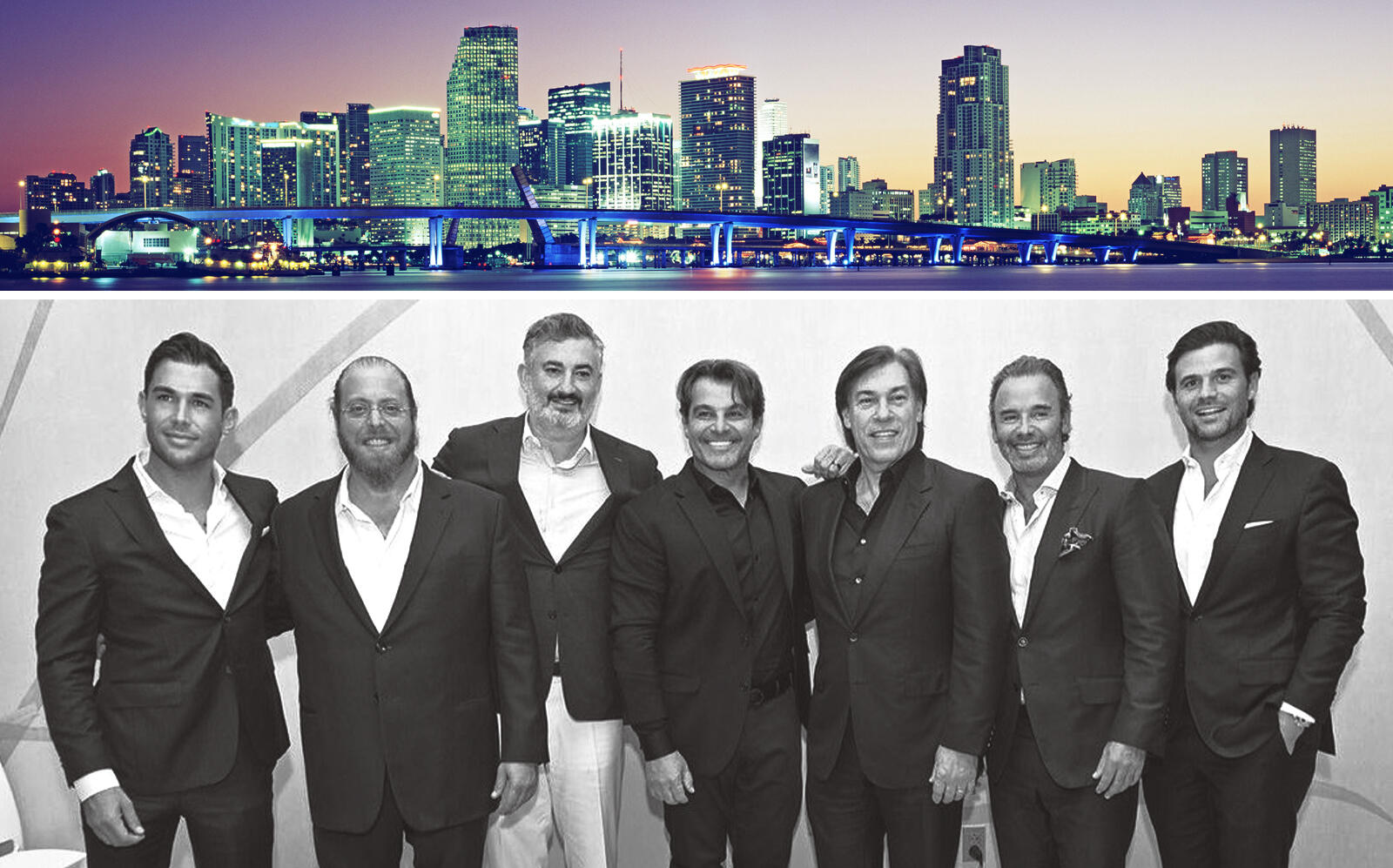Trending
Is Miami’s residential architecture overplayed? No way!: TRD panel at Artefacto
Inside Artefacto’s new Coral Gables showroom, developers, designers and brokers discussed the evolution of Miami architecture and design

To break up the glass-and-steel monotony of his next planned condo tower, developer Gil Dezer will be spending extra money to create a dramatic design element.
His Dezer Development is teaming up with Bentley to build the Bentley Residences in Sunny Isles Beach, which will be the luxury automaker’s first residential building in the world.
During an architecture panel Thursday evening, Dezer revealed one of the project’s features, triangular windows fastened together to look like diamonds, increased construction costs by more than $10 million.
“We had to go ahead and do a ton of testing and really create [the windows] because it has never been done before,” Dezer said. “This is costing me $12 million to $14 million more” than if he were to install standard three-foot wide condo building windows.
Dezer was among five speakers on a panel about the impact of architectural design in Miami’s real estate market, moderated by Amir Korangy, chairman and publisher of The Real Deal. The event was hosted by Paulo Bacchi, CEO of Artefacto, at the high-end furniture store’s new Coral Gables showroom at 101 South Dixie Highway.
Roughly 500 attendees packed the 40,000-square-foot building, sipping champagne and mingling amid the furniture displays. The evening culminated with a samba band and dancers taking to the stage.
In addition to Dezer, president of Dezer Development, the panel included Edgardo Defortuna, president and CEO of Fortune International Realty; Daniel de la Vega, president of One Sotheby’s International Realty; Francisco Llado, principal of DOMO Architecture + Design; and Jay Parker, CEO of Douglas Elliman’s Florida region.
Korangy pressed the panelists about a perceived lack of originality in recent designs of condo buildings and modern mansions in Miami. “I am starting to see it repeat itself,” Korangy said. “It’s becoming saturated. It is starting to look the same, even for the new homes. I love the new Miami homes with the flat roofs and the windows.”
Those elements are being replicated across Miami’s luxury market, Korangy added.
The panelists insisted developers and architects are creating residences that are in high demand from luxury buyers, but that also incorporate design elements that create a distinctive home.
Llado, whose firm specializes in designing custom mansions, said developers, architects and brokers are dealing with very sophisticated buyers who are telling them what to do. “Our houses have changed from 10 years ago when it was a white painted stucco, quick spec home,” Llado said. “Now they want wood outside, marble, Raymond Jungles [landscaping] outside, and inside I want Artefacto.”
De la Vega said the differences are subtle when it comes to the contemporary box structure with large glass treatments of modern mansions. “We got a little bored with that,” he said. “We are starting to see more organic architecture; more textures and more patterns. That is what all buyers are demanding from us.”
“People are looking for lifestyle,” said both Defortuna and de la Vega, and others agreed.
In his dealings with buyers, Defortuna said they are more interested in simplicity, quality and attention to detail than a very heavy design. “They want spaces that can be utilized,” he said. “It is not about big spaces that are not used, especially in buildings with hospitality services….You can have a party with a guest chef for 12 of your best friends or best couples. That is what they want.”
Parker said buyers want the white box modern home with floor-to-ceiling windows so they can allow more light into the home and enjoy South Florida’s subtropical climate. “When you talk about buyers coming from out of town, they want to enjoy the indoor and outdoor experience,” Parker said.



